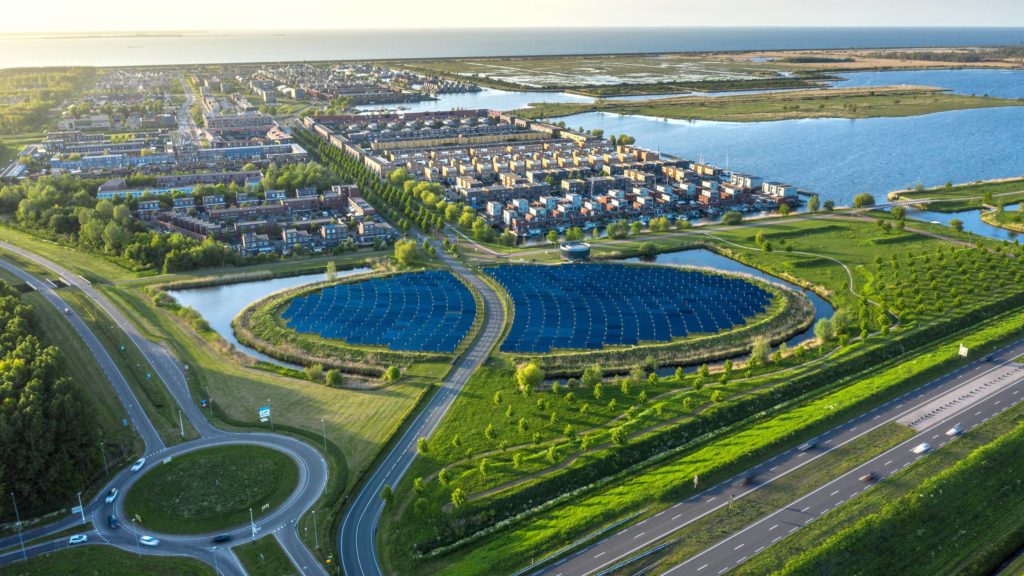There’s zero doubt that human-induced climate change is edging us ever-closer towards an environmental tipping point. Despite the much-anticipated discussions focused on decarbonisation policies at COP26, and warnings by the Intergovernmental Panel on Climate Change (IPCC), much work still needs to done to embed sustainable ideals into our everyday lives and working practices. Such is the risk, that it is now estimated we are only a few years away from crossing the threshold into irreversible environmental damage.
Reimagining our urban environments
Continuing as we are now, by 2027 the environmental damage we have inflicted will be irreparable. The UK government has been pushing for change. Various regulations such as London’s low and ultra-low emission zones, and the introduction of legislation aiming to cut emissions by 78% by 2035 are steps in the right direction.
However, despite these positive changes, and examples of forward-thinking, it still isn’t enough. Greater change will be needed. This is particularly true when it comes to our urban environments, where 55% of people globally now reside. If we are to win the war on climate change, more sustainable approaches to planning and living in our cities and urban spaces will be fundamental.
The concept of a sustainable city is intricately linked to the notion of smart cities. Technologies such as improved connectivity, IoT devices, and smart buildings have dominated the smart cities conversation for the past several years. However, with the environmental challenges we face increasingly pertinent, we need to look at evolving the smart cities conversation into one focused on the ‘sustainable city’.
Sustainable cities centre on the idea that urban areas can, with the latest technologies, develop a symbiotic relationship with their rural surroundings. In effect, they become environmentally more harmonious and self-reliant – like an industrial ecosystem.
Where do we start?
The first step should focus on the very fabric of the city itself. This can be done by addressing the materials that are used to build it. Modern Methods of Construction (MMC) and additive manufacturing, or 3D printing, are starting to come into the limelight, alongside carbon neutral construction materials, smart energy grids, and integrated, zero-carbon delivery systems. By changing the materials we use to construct cities, away from high embodied carbon ones such as traditional concrete, then over time as new parts of a city are built and developed, it can be done so in a more sustainable way. However, the inner workings of a city, especially its transport, are also important areas for consideration.
According to the Department for Transport, road transport contributes to around a quarter of the UK’s total greenhouse gas emissions and is officially cited by Public Health England as one of the biggest environmental threats to health in the UK. Around 36,000 deaths are attributed to poor air quality annually.
This is where innovative, zero-emissions systems can come into play. Not only is the change good for the planet and people living in urban areas, but it’s also good for business. After all, the retail industry is responsible for a colossal carbon footprint and is coming under increasing pressure from consumers to operate in a cleaner way. Alongside consumer demands, we are seeing pressure from governments looking to pass legislation ensuring logistics companies continue to improve upon their sustainability goals to fuel greener transport systems.
Delivery solutions
Magway, an all-electric zero-emissions delivery system can replace many of the journeys made by commercial road vehicles such as HGVs. Powered by magnetic waves, with carriages carrying packages travelling through dedicated pipe networks, Magway doesn’t rely on battery power or traditional fuels. It can, when powered by a renewable energy source, be completely carbon free. By removing retail and delivery vehicles from the roads, Magway enables the delivery of goods at a high capacity, without releasing any emissions into the atmosphere.
Combined with city planning based around the concept of 15-minute liveable neighbourhoods, Magway can help create urban environments that are better for people and the planet. With Magway lowering emission levels, and cities designed in a way to limit the need for travel by car, urban areas can quickly become places that work in harmony with nature. Through the adoption of MMC, 3D printing and low carbon concrete, the changes needed to build Magway systems and redesign cities can be done in a way that reduces short term impacts on the environment, while providing a platform for long term success.
Ultimately, we must take this opportunity to build on the idea of the smart city and evolve it using more sustainable practices and technology. It is clear that we are fighting a race against time to meet the 1.5C target for warming that was agreed upon at COP26. The development of more sustainable cities must be prioritised before we hit the environmental tipping point from where there will be no return.
– Huw Thomas, Development Director at Magway –
